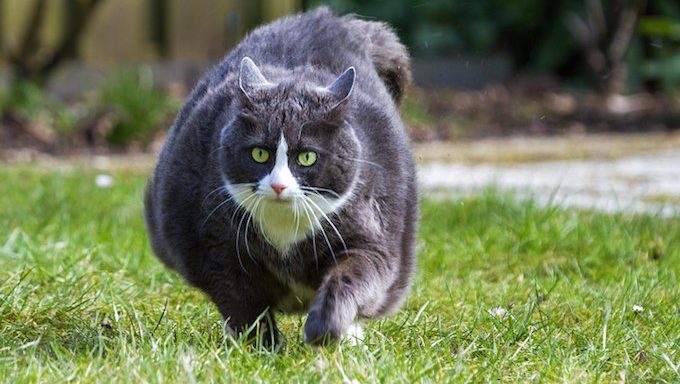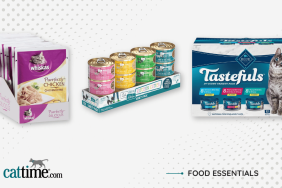October 9th is National Pet Obesity Awareness Day, but I get angry when someone shows me a picture of an obviously obese cat at any time of year.
It’s not because I think the cat is going through a torturous time suffering from body image issues.
It’s not the fact that being overweight can affect a number of feline medical issues like diabetes, liver complications, arthritis, and skin conditions — some of which can also impair cats natural ability to groom and maintain themselves. Putting it simply, if a cat can’t touch their toes, they can’t wash them.
No, it’s because the root cause of the problem is the cat’s human, and feline obesity says more about that cat parent than the cat.
You Need To Be The Cat Parent & Prevent Feline Obesity
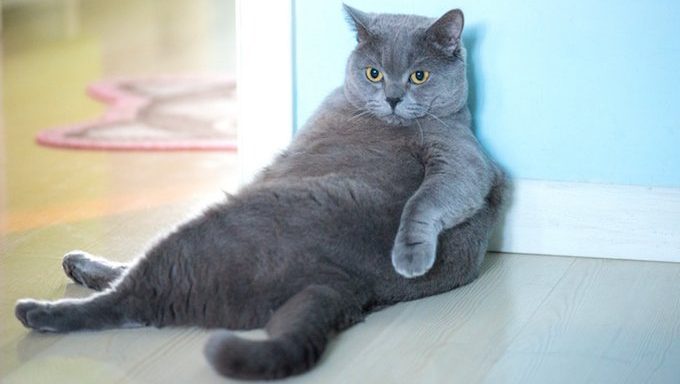
Let me explain. When it comes to the things cats naturally like, they can be pretty simple creatures. They’re happy to nap for 20 hours a day. They have a magnetic attraction to cardboard. And, they will contentedly stare at birds outside a window as if watching some epic suspense movie.
Cats will also always wantonly break those traditional pastimes if there’s a chance food is on offer.
We all know that, left to their own devices, our cats will happily munch through an entire bag of treats. It’s why you don’t keep the cat treats next to the cat’s food bowl on the floor.
So once you’ve adopted a cat, it’s up to you to step up and properly monitor their food.
Humans Cause Feline Obesity
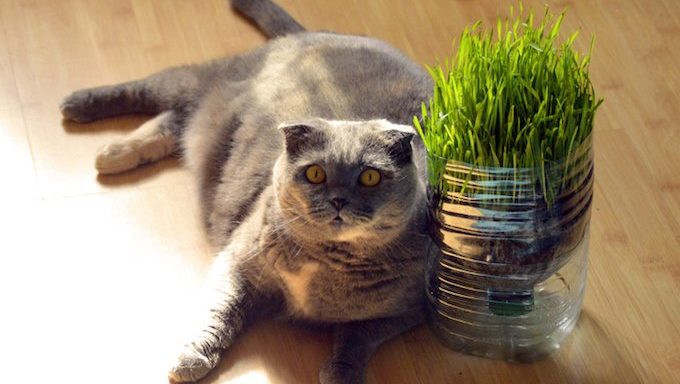
Unfortunately, in my experience, many cats are destined to become overweight the moment they’re adopted.
A rescue cat is taken home and, because they were previously homeless or living in a tumultuous situation, it’s deemed okay to lavish them with treats and top up their food bowl once they’ve scarfed their adorable little face full.
“She had a bad life before. I just want her to be happy. I know she’s put on a bit of weight but she deserves it,” is a refrain that’s said too often.
This predicament is exacerbated in the case of indoor cats. I’m a strong advocate that, at least in large cities, cats should be safely behind window panes and closed doors.
But while felines are independent, low-maintenance pets in a sense, you as your cat’s guardian have a duty to make sure they stay active and interested in the enclosed world around them.
Sure, sometimes after a long day, the idea of trying to entice the cat into a play session can seem exhausting. But too much food and zero exercise is a bad combination.
Instead, what seems to often happen is a newly adopted cat keeps putting on a little too much weight for a number of months or even a year or so. And once a cat becomes overweight, it’s harder than you think to re-vamp their menu and eating habits.
After all, we all know that cats are inherently finicky creatures.
You Might Not Realize You’re Overfeeding Your Cat
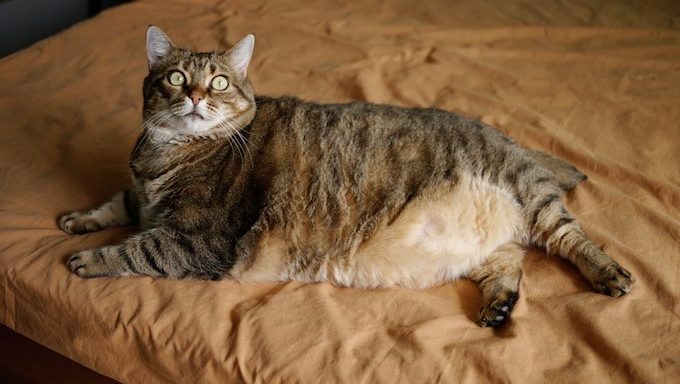
I remember once suffering through a brief roommate situation with a person who had two exceptionally plump indoor cats.
The cat parent’s solution was to feed the cats in the morning before work, while also investing in one of those timed feeders that dispenses a set amount of dry food at set intervals throughout the night.
Unfortunately, the feeder was clearly broken to the point where each night, when they couldn’t get to their food, the cats would whine and wail as if being tortured by some demonic presence. These felines were basically forced onto some weird offshoot of a crash diet, which isn’t good for anyone’s metabolism.
Learn About Your Cat’s Food
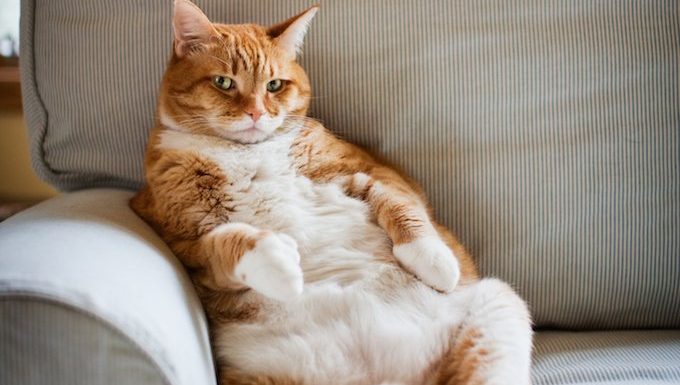
With feline obesity being a real and common problem, I’m always surprised by how many cat parents seem relatively clueless about about how much food their cat is meant to be eating — whether to maintain weight or trim a couple of pounds.
Ask your vet at the next checkup to let you know how many calories your cat should consume. Then, it’s just a case of doing the simple math of working out how much dry and wet food you should be serving each day.
If your brand of cat food isn’t open about nutritional info, there are many comprehensive resources online to help demystify the process.
Remember, healthy eating habits are just as important to cats as they are to us humans. So do the right thing and embrace your role as a responsible feline chef.
How do you make sure your kitty stays at a healthy weight? Do you think cat parents should be more responsible with their kitties’ diet and exercise? Let us know in the comments below!
Related Articles:
